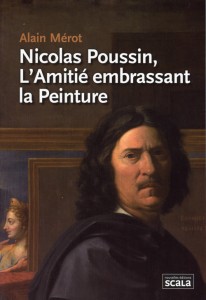Alain Mérot, Nouvelles Éditions Scala, 2013
Camillo Massimo, Italian cardinal, friend and protector of Nicolas Poussin – but also of Claude and Velazquez -, refers to the painter’s end of life, from January to November 1665.
In the context of the XVIIth century Rome, he remembers his conversations with Poussin and draws up his portrait: his trips between France and Rome, the disappointments and suffers from his life, his humanity, his growing loneliness.
These thoughts are also a pathway through the paintings and insist on the painter at his work ; they invite us to take a closer look at a work which is one of the greatest accomplishments of Classicism, as an echo to the ideal of clarity and elevation of the cartesian philosophy.
